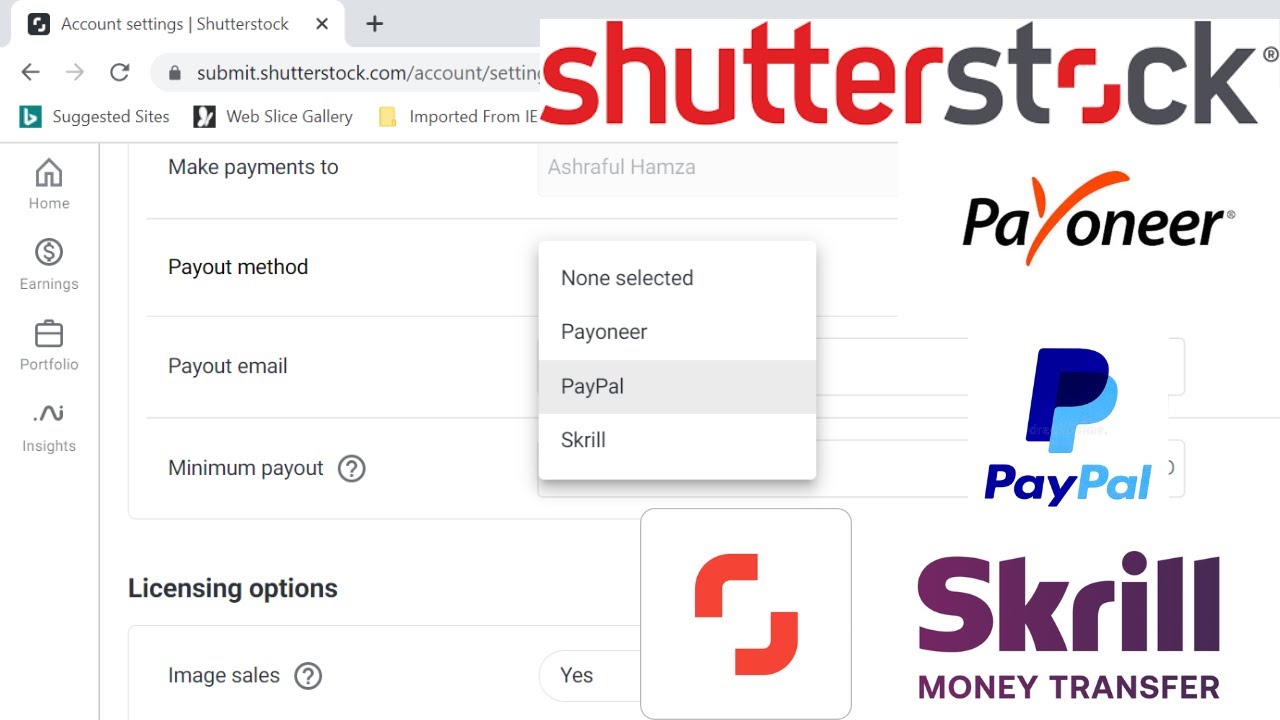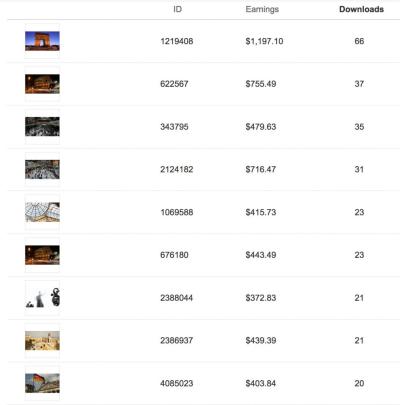So, you’ve got some great photos and you’re wondering how to turn your passion into profit? Shutterstock is one of the biggest platforms out there for photographers looking to license their work and earn money. But understanding how licensing works and how you can maximize your earnings can be a bit tricky at first. Don’t worry — I’m here to walk you through the essentials so you can confidently upload, license, and profit from your images. Whether you’re just starting out or looking to optimize your current strategy, knowing the ins and outs of Shutterstock licensing is key to making the most of your photography skills.
Understanding Shutterstock Licensing Options and Usage Rights

Shutterstock offers different licensing options to suit a variety of uses for your images. The two main types are Standard License and Enhanced License. Knowing the differences between them will help you set the right expectations, price your photos appropriately, and ensure you’re granting the correct usage rights to buyers.
Standard License
The Standard License is suitable for most common uses, such as websites, blogs, social media, presentations, and printed materials up to 500,000 copies. It’s perfect for small to medium-sized projects. When someone purchases a Standard License, they can use your photo for commercial purposes within these limits, but there are restrictions:
- Print runs are capped at 500,000 copies.
- The image cannot be used in merchandise for resale (like t-shirts or mugs).
- It cannot be used in promotional items or packaging that will be sold.
Essentially, if your image is going to be used in a way that exceeds these limits or involves merchandise, you’ll need to consider the Enhanced License.
Enhanced License
The Enhanced License gives buyers broader rights, making it suitable for larger projects, merchandise, or high-profile campaigns. It removes most of the restrictions of the Standard License:
- No limit on print runs or distribution.
- Allows use in merchandise for resale, like apparel or home goods.
- Permits use in advertising campaigns with high reach or in large-scale promotional materials.
As a contributor, offering images with the option for an Enhanced License can significantly boost your earnings per download. Buyers who need the extra rights will often pay more, so understanding these licensing options is crucial for pricing your work accordingly and making sure your rights are protected.
In summary, knowing which license to assign when you upload your photos on Shutterstock helps you clarify usage rights for buyers and can increase your earning potential. Always think about how your images might be used and choose the licensing option that best fits the intended use. The clearer you are about licensing, the easier it will be to maximize your income and protect your work!
Steps to Upload and License Your Photos Effectively

Getting your photos licensed on Shutterstock is an exciting journey, but it’s important to follow a clear process to ensure everything runs smoothly and your images are set up for success. Let’s walk through the essential steps to upload and license your photos effectively.
Step 1: Prepare Your Photos Before uploading, make sure your images are high quality, well-edited, and meet Shutterstock’s technical requirements. This includes:
- Minimum resolution of 4 megapixels
- Properly color-corrected and sharpened
- Free of watermarks and logos
- Saved in JPEG format with a sRGB color profile
Step 2: Create a Contributor Account If you haven’t already, sign up as a contributor on Shutterstock. This process is straightforward—just provide your details, agree to the terms, and verify your identity if needed. Once approved, you’re ready to start uploading.
Step 3: Upload Your Photos Use the contributor dashboard to upload your images. You can upload multiple files at once, which is a big time-saver. During upload, you’ll be prompted to add metadata:
- Title: Make it descriptive but concise.
- Keywords: Use relevant, specific keywords to help users find your images.
- Categories: Assign appropriate categories to improve discoverability.
Step 4: Add Licensing Details When uploading, you can specify the licensing options. Shutterstock offers royalty-free licensing by default, which is the most common for stock photos. Be sure to select the correct license type to maximize your earnings and clarify usage rights.
Step 5: Submit for Review After filling out all details, submit your photos for review. Shutterstock’s review team checks for quality, relevance, and compliance. Once approved, your images are live and ready for licensing.
Step 6: Monitor and Promote Keep an eye on your dashboard for licensing sales and earnings. Share your portfolio on social media or your website to attract more buyers. The more your photos are viewed and licensed, the higher your potential earnings.
Tips for Optimizing Your Photos for Higher Licensing Revenue
Maximizing your earnings on Shutterstock isn’t just about uploading lots of images—it’s about optimizing each one for maximum visibility and appeal. Here are some practical tips to boost your licensing revenue:
1. Focus on Trending and Evergreen Topics
Stay current with popular themes like remote work, sustainability, or health, but also shoot timeless subjects such as business meetings, nature, and celebrations. Combining trending and evergreen content ensures your portfolio remains relevant year-round.
2. Use Strategic Keywords and Descriptions
Think like a buyer! Use relevant, specific keywords that accurately describe your image. Avoid overstuffing keywords—quality over quantity is key. Well-crafted descriptions and accurate tags help your images appear in search results when users look for particular subjects.
3. Capture High-Quality, Unique Images
Quality is king. Use good equipment, good lighting, and compose your shots thoughtfully. Unique perspectives or niche subjects can also set your portfolio apart and attract buyers looking for something special.
4. Edit Images for Consistency and Appeal
Ensure all your images are professionally edited for color balance, exposure, and sharpness. Consistency across your portfolio helps establish your style and boosts your credibility as a contributor.
5. Diversify Your Portfolio
Don’t put all your eggs in one basket. Upload a mix of images—portraits, landscapes, lifestyle, concepts—to appeal to a broader audience and increase licensing opportunities.
6. Keep Up with Shutterstock Trends and Guidelines
Regularly review Shutterstock’s contributor resources, trending topics, and content guidelines. Adapting your content to align with current demands can lead to higher sales.
7. Promote Your Portfolio
Share your best images on social media, your blog, or in photography communities. The more exposure your work gets, the higher the chances of licensing and earning more.
By following these steps and tips, you’re well on your way to not only licensing your photos on Shutterstock but also maximizing your earning potential. Consistency, quality, and strategic optimization are your best tools for success in the competitive world of stock photography!
Common Mistakes to Avoid When Licensing Photos on Shutterstock
Getting your photos licensed on Shutterstock can be a fantastic way to earn passive income, but it’s easy to stumble into some common pitfalls that might hurt your earning potential or cause unnecessary hassle. Let’s take a look at some of these mistakes so you can steer clear of them and make the most out of your licensing journey.
1. Ignoring Image Quality
One of the biggest mistakes is uploading images that aren’t sharp, well-lit, or properly composed. Shutterstock’s reviewers are pretty strict about quality, and low-quality images can be rejected or earn less because they don’t meet market standards. Always ensure your photos are in focus, properly exposed, and free of noise or distractions.
2. Overlooking Keywords and Metadata
Keywords are your best friends when it comes to discoverability. Failing to add relevant, specific keywords can make your images invisible to potential buyers. Avoid generic tags like “nature” or “city” alone—get specific! Use descriptive words, include relevant themes, colors, and subjects. Also, ensure your titles and descriptions are accurate and detailed.
3. Not Following Shutterstock’s Content Guidelines
Each platform has its rules about what can and cannot be licensed. For Shutterstock, this includes avoiding images with copyrighted logos, recognizable people without model releases, or prohibited content like violence or adult themes. Skipping this step can lead to rejections or even account suspension.
4. Forgetting to Update or Refresh Your Portfolio
Staying active and regularly adding new images can boost your visibility and sales. Many new contributors make the mistake of uploading a batch of images and then neglecting their portfolio. Keep uploading fresh content, and periodically review your existing images to see if they can be improved or re-tagged.
5. Not Understanding Licensing Options
Shutterstock offers different licensing types—standard and enhanced. Not understanding the differences can lead to missed opportunities or licensing that doesn’t match a buyer’s needs. Be sure you understand what each license covers so you can set appropriate prices and avoid licensing disputes.
By avoiding these common mistakes, you set yourself up for a smoother licensing experience and better earnings. Remember, quality, relevance, and ongoing engagement are key to thriving on Shutterstock.
Maximizing Earnings Through Strategic Licensing and Portfolio Management
Now that you’re aware of what to avoid, let’s focus on how to actively maximize your earnings through smart licensing strategies and effective portfolio management. Think of your Shutterstock account as a growing business—you want to nurture it, optimize it, and keep an eye on opportunities.
1. Diversify Your Portfolio
Don’t put all your eggs in one basket. Upload images across various themes, styles, and subjects. This not only increases your chances of making sales but also attracts different types of buyers—from bloggers and marketers to publishers and designers. A diversified portfolio means more steady income streams.
2. Use Strategic Keywords and Descriptions
Effective keywording is essential. Conduct some research to see what terms are trending or in high demand. Use a mix of broad and niche keywords. For example, if you have a photo of a “mountain sunrise,” include keywords like “mountain,” “sunrise,” “nature,” and more specific tags like “Alps,” “early morning,” or “hiking.” This boosts your image’s visibility.
3. Leverage Licensing Options Wisely
Understanding when to set images for standard or enhanced licensing can impact your earnings. For high-value, exclusive images, consider offering enhanced licensing options or even exclusive rights if it aligns with your goals. Also, bundle images into collections or series to appeal to buyers looking for multiple related images.
4. Regularly Review and Update Your Portfolio
Keep track of your best-sellers and see what’s performing well. Don’t be afraid to update or re-tag older images to improve their visibility. Removing underperforming images might help focus your portfolio on your strongest content. Additionally, stay current with trending topics or seasonal themes to capitalize on timely demand.
| Strategy | Benefit |
|---|---|
| Diversification | Broader market reach and steady sales |
| Effective Keywording | Increased discoverability |
| Portfolio Updates | Improved relevance and sales |
| Licensing Options | Higher earnings potential |
By implementing these strategies, you’re positioning yourself to maximize your earnings on Shutterstock. Remember, successful licensing isn’t just about uploading great images—it’s about smart management, understanding market needs, and continuously optimizing your approach. Keep learning, stay active, and your portfolio will become a reliable source of income over time.
Conclusion and Resources for Successful Shutterstock Licensing
Licensing your photos on Shutterstock offers a fantastic opportunity to generate passive income while sharing your creative work with a global audience. To maximize your earnings, it’s essential to understand the licensing options available, optimize your images for searchability, and adhere to Shutterstock’s quality standards. Consistently submitting high-quality, relevant images increases your chances of sales and helps build your reputation as a contributor.
Remember, successful licensing also involves staying informed about the latest industry trends and platform updates. Below are some valuable resources to support your journey:
- Shutterstock Contributor Guide: Provides detailed instructions on uploading, licensing, and optimizing your images. https://submit.shutterstock.com/contributors
- Royalty Rate & Payment Information: Understand how your earnings are calculated and paid. https://support.shutterstock.com/
- Photography & Licensing Tips: Blogs and webinars that offer insights into best practices and market trends.
- Community Forums: Connect with other contributors to share experiences and advice. https://forums.shutterstock.com/
Ultimately, dedication, quality, and continuous learning are key to thriving on Shutterstock. By leveraging these resources and applying best practices, you can enhance your licensing success and achieve your earning potential as a photographer.


